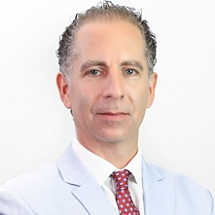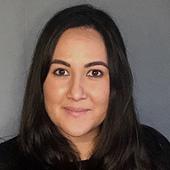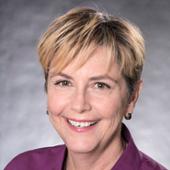Programme
Please note: all timings are listed in UK time (GMT), to view start times in your local timezone, please click here.
-
Welcome and introduction
- Session one: Global overviews and developments in Asia
-
Cosmetics versus drugs and why they should be viewed differently
- Cosmetic definitions and scope across Asia
- Where are products regulated differently
- Impacts of different classification
-
South Korea's cosmetic framework
- Cosmetics for children
- Information on ingredients
- Recent concerns
- Cosmetics and K-Culture
-
Updates to the ASEAN Cosmetics Regulation
- Understand the latest development in ASEAN Cosmetics Directive
- Review recent regulatory trends among ASEAN member states related to the cosmetic sector.
- Area of interest for ASEAN health authorities related to innovation in the cosmetic sector.
-
Q&A
-
China's new regulatory framework for cosmetics
- New definition and classification of cosmetics and cosmetic ingredients
- Cosmetic management system in China: registration/notification
- Other Highlights
- Animal testing
- Functional claims – must be supported and substantiated
- Requirements on novel ingredients (e.g., nano materials,ingredients from biotechnology, etc.)
-
Ingredient transparency in China
- How to export cosmetic ingredient to China?
- Management measures for existing cosmetics ingredients and transitional treatment
- Management of new cosmetic ingredient
-
India's cosmetic framework
- Introduction of Cosmetics Rules 2020 and it's implication to compliance for cosmetic manufacturers.
- Definition of Cosmetics in India and Regulatory Authorities.
- Labelling requirements.
- Summaries on export of cosmetics to India
-
Q&A
-
Short break
- Session two: Halal certification and labelling
-
Halal certification requirements in ASEAN
- Halal regulations in ASEAN
- Definition and examples
- Common requirements for Halal certification
-
Mandatory halal certification in Indonesia
- What is Halal and Halal Certification?
- Halal Certification for Cosmetics
- Halal Certification Procedure
-
The Gulf Cooperation Council (GCC) halal certification scheme
- Halal certification scheme in the GCC & UAE
- Understand the Halal audit and standard requirements as per GSO.UAE.S.2055
- Halal certification process as per GSO.UAE.S. 2055
- Examples of the ingredients used in cosmetic & personal care products need to be Halal
- Example of the prohibited ingredients used in cosmetic & personal care products
-
Q&A
-
Lunch break and sponsor workshops
-
Sponsor workshop from Veeva: Digital Product Compliance: How Ingredient Transparency Drives Growth
11.45-12.15pm
The most in-demand thing in cosmetics right now isn’t a product — it’s transparency. Customers expect transparent information about ingredients, their origins, and whether they comply with specific environmental, social, and religious standards. Join this webinar to learn how cosmetic ingredient suppliers are using digital tools to provide this transparency while also differentiating their business and cultivating trust along the value chain.
- Session three: Developments in Europe
-
Introduction to session three
-
Europe’s cosmetic framework
- Definitions
- Positive, Negative & Restricted Ingredient Lists
- The role of a ‘Responsible Person’
- The Product Information File (PIF)
- Safety Assessment Requirements
- Common Claims Criteria
-
Europe’s approach to cosmetics vs drugs
- Definitions, claims and borderline products
- Notification/approval and responsible person
- Ingredients and safety evaluation
-
Flavours and fragrances – building consumer trust through compliance and transparency.
- An overview of the fragrance and flavour regulatory landscape
- Web based platforms, enhancing the transparency of fragrance and flavour ingredients
- A case study on successful implementation of compliance and transparency programmes
-
Q&A
-
Europe's extended producer responsibilities (EPR) for packaging
- History of development of EPR in Europe, including EU vs UK approach
- Source, scope and nature of legal obligations for EPR in respect of cosmetics packaging in Europe
- Future of EPR and similar requirements in Europe
-
The European circular economy and its effect on the cosmetic sector
- Outline the drivers and opportunities of the circular economy
- Discuss the relevant actions of the EU’s Circular Economy Action Plan 2020
- Look at the EU’s Chemicals Strategy for Sustainability for the cosmetics sector
- The main policy options for the targeted revision of the EU’s Cosmetics Regulation
 Hans Ingels
Head of Unit Bio-economy, Chemicals and Cosmetics DG Internal Market, Industry, Entrepreneurship and SMEs, European Commission
Hans Ingels
Head of Unit Bio-economy, Chemicals and Cosmetics DG Internal Market, Industry, Entrepreneurship and SMEs, European Commission -
Europe's approach to children's cosmetic products
- Physiological characteristics of infant and associated risks
- Exposure characteristics of infant and associated risks
- Recommendations for the safety evaluation of children's cosmetic products
- Recommendations for some specific ingredients
-
Positive Impact: Beauty Kitchen Case Study
- Beauty Kitchen background
- The move to circular beauty
- Return-Refill-Repeat programme
- BCorporation and impacts
- Marketing communications
-
Q&A
-
Short break
- Session four: Science and testing
-
Evaluation & assessment of cosmetic ingredients
- Safety assessments in the cosmetic industry
- Techniques in safety assessment when no data is available
- California Proposition 65 exposure assessment
-
Global approaches to animal testing on cosmetic products
- Non-animal approaches to testing
- The status of animal testing for cosmetics in different regions around the world
- Some of the barriers to achieving a world without animal testing for cosmetics
-
Non-animal testing approaches including new technologies
- Recent global progress in non-animal cosmetic safety assessment;
- The need for global capacity building amongst the regulated and regulatory communities;
- The AFSA Collaboration
-
Q&A
-
Close of day one








_opt.png)













